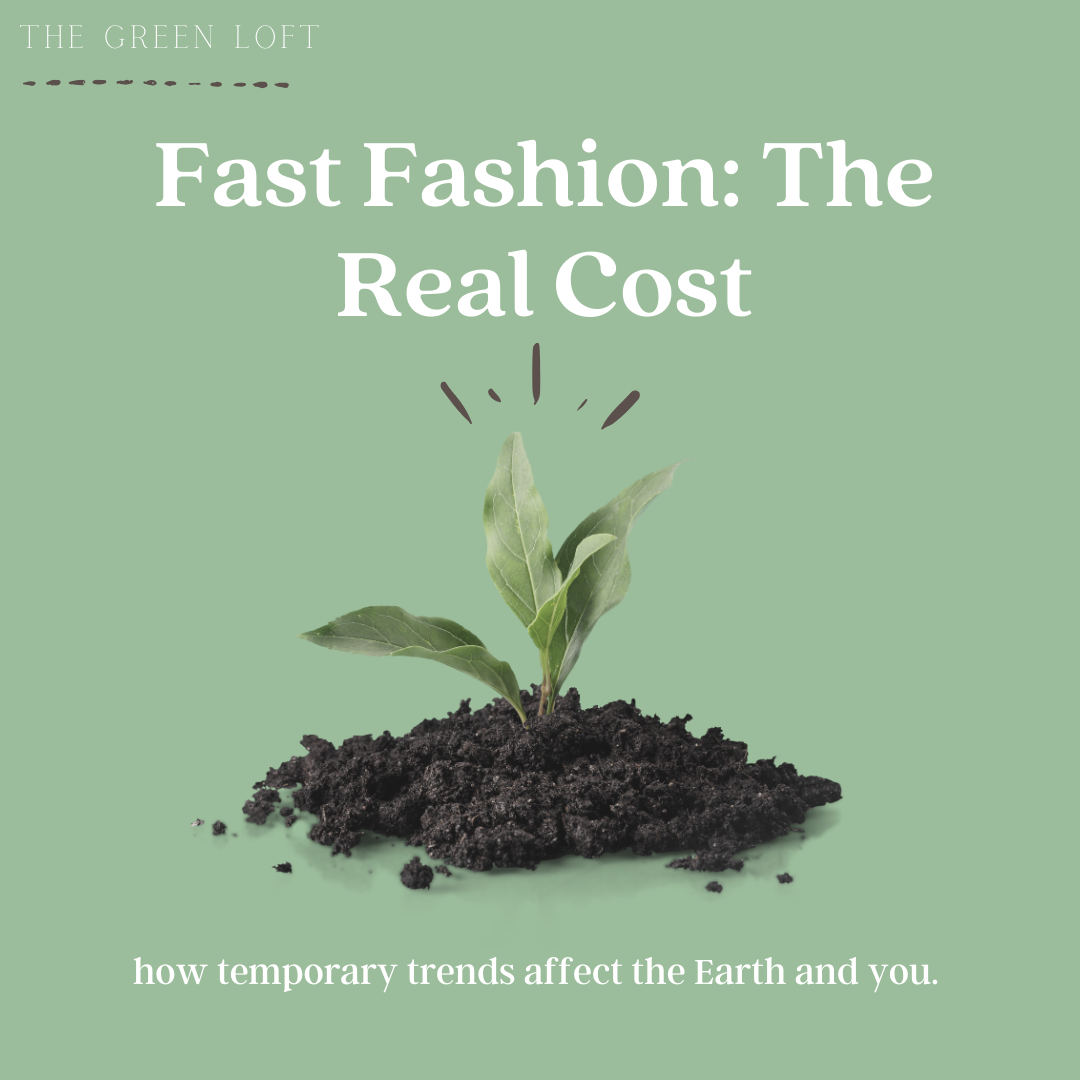With the development of industrialization, the changing speed of fashion trends is also increasing. Therefore, when we shop, cheap fast fashion clothing is usually an affordable and fashionable option for our pocket, but what is the real cost of fast fashion?
Is fast fashion really cheap and healthy?

The answer is NO.
Fast fashion products in fact are very expensive in terms of their manufacturing and recycling processes and are toxic to both our health and the environment.
What is Fast Fashion?
Fast fashion refers to the fashion designs that flow from the catwalk and change quickly to capture the current fashion trends. Fast fashion aims to quickly produce cost-efficient products to satisfy the fast-changing customers’ tastes as much as possible. With the high fashion look and relatively low price, fast fashion clothing has quickly occupied the closets of a large number of people and become a trend of the clothing industry. The big names of fast fashion brands include ZARA, H&M, Topshop, etc.

According to a Greenpeace report in 2017, clothing sales have almost doubled from 1 trillion dollars in 2002 to 1.8 trillion dollars in 2015 and is expected to rise to $2.1 trillion by 2025. Undoubtedly, the fashion industry has become a crucial part of the world's industrialization.
Why is Fast Fashion Toxic to Our Health?
Have you ever chosen colorful t-shirts, or waterproof coats, or wrinkle-free pajamas?
If YES, please be careful.

To control the cost and improve the functionality of their products, fast fashion brands have a lot of chemical additives in clothing, including the toxic ones. The most common ones include:
- PFC - used for waterproof and stainproof; can affect liver health and disrupt hormonal functions.
- Azo Dyes - one of the common dye used; can release aromatic amines.
- Heavy Metals - in dye and leather tanning; can damage the nervous system.

Synthetic fibers, which are the common material of fast fashion clothing, prevent our skin from discharging toxins every day. Our skins can discharge up to 1lb of toxins per day to keep us healthy. However, synthetic fabrics suffocate our skin and can cause skin rashes and respiratory problems, and even headaches and nausea.

Have you ever felt the “new clothes smell”?
It is actually a mixture of toxic finishing treatments like urea resins and formaldehyde. New clothing is often covered with formaldehyde during shipping to prevent parasites and wrinkling. However, formaldehyde is also found to be linked to dermatitis and lung cancer.

Why is Fast Fashion Toxic to the Environment?
Did you know this?
It takes 2,700 liters of water to make one cotton shirt, which is enough water for one person to drink for 2.5 years.
The global fashion industry consumed 79 billion cubic meters of water, which is equivalent to 32 million Olympic-size swimming pools.

There are also other shocking statistics below:
- Approximately 20% of industrial water pollution comes from textile manufacturing.
- Textile dyeing is the second-largest polluter of water globally.
- The fashion industry alone emits 10% of global carbon emissions, more than all international flights and maritime shipping.
- 43 million tons of chemicals are used in textile production every year.

Fast fashion brands aim to speed up the manufacturing process and control the cost of their products, therefore, they usually choose countries with lower-priced labor. Rivers in the manufacturing countries are heavily polluted that become too toxic to sustain wild animals and even jeopardize the health of people who live in the areas. The workers are often working without adequate protection against the toxic chemicals in the manufacturing process, exposing them to increased risks of diseases.

Fast fashion brands also use a lot of cheap but unsustainable materials. According to Browne’s study in 2011, about 1,900 synthetic plastic microfibers per garment are released when washed, and as they are too tiny in terms of sizes and shapes, these plastic microfibers are not caught in wastewater treatment and enter our oceans. The non-biodegradable fabrics in discarded clothing can sit in our landfills for up to 200 years.

What better choices do we have?
First of all, choose organic and natural materials. As an example, the growing and harvesting of organic cotton use 71% less water and 62% less energy than the conventional cotton making process. Therefore, choosing organic and natural materials is a good way to help protect the environment and live eco-friendly.

Thirdly, choose sustainable brands, such as CLOECO. Now as the environmental problems become more and more severe, there are more brands focusing on the sustainability of clothing. CLOECO is one of them. CLOECO adopts organic and biodegradable materials and the manufacturing process of our products also focuses on sustainability and eco-friendly.

It is our choice to make, either the cheap but toxic and unsustainable products, or the relatively expensive but affordable and eco-friendly brands.
It is also our power to make the change, to help return the blue sky to our earth, and to live healthier lives.


1 comment
Thanks for sharing this interesting blog with us.
https://www.topsandbottomsusa.com/collections/moose-knuckles